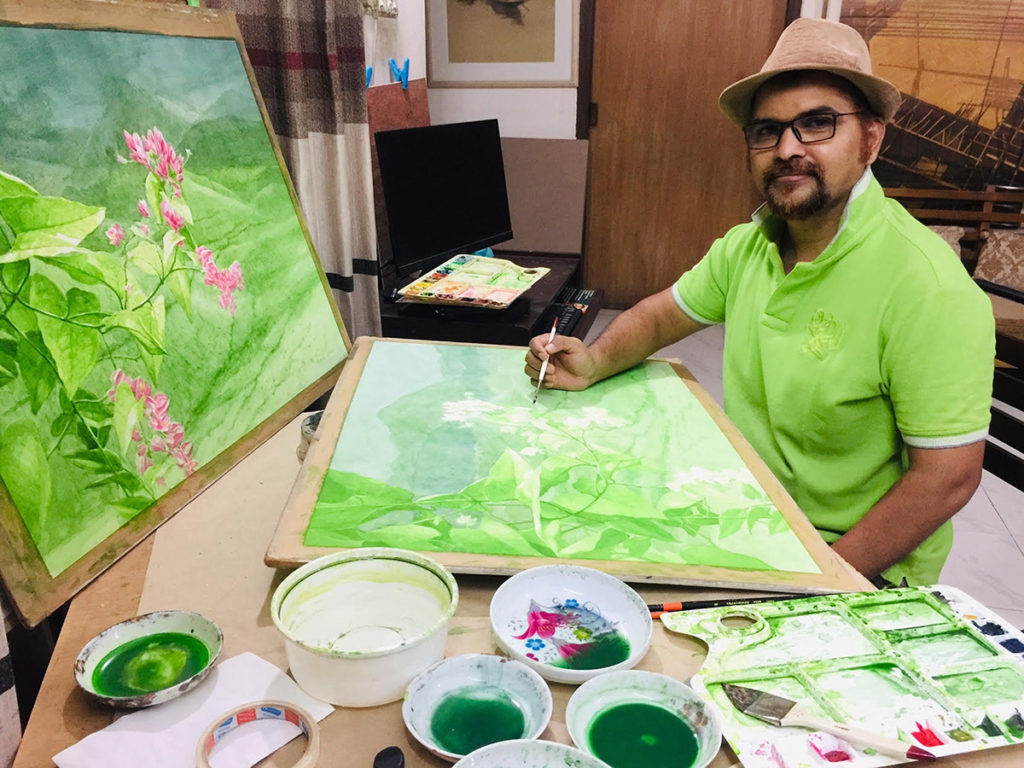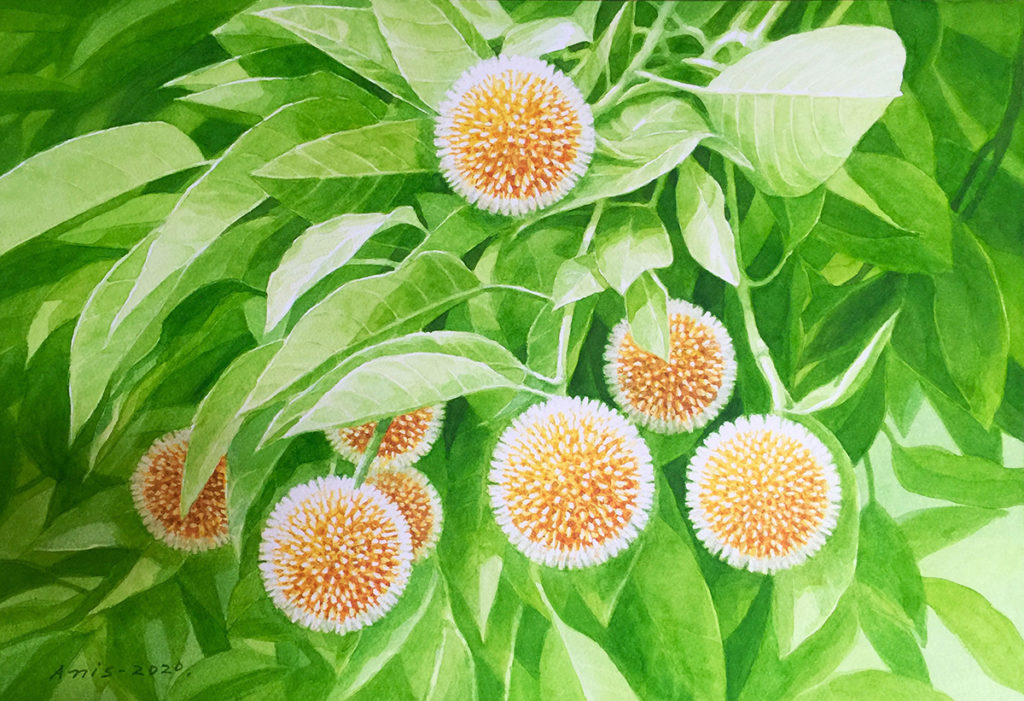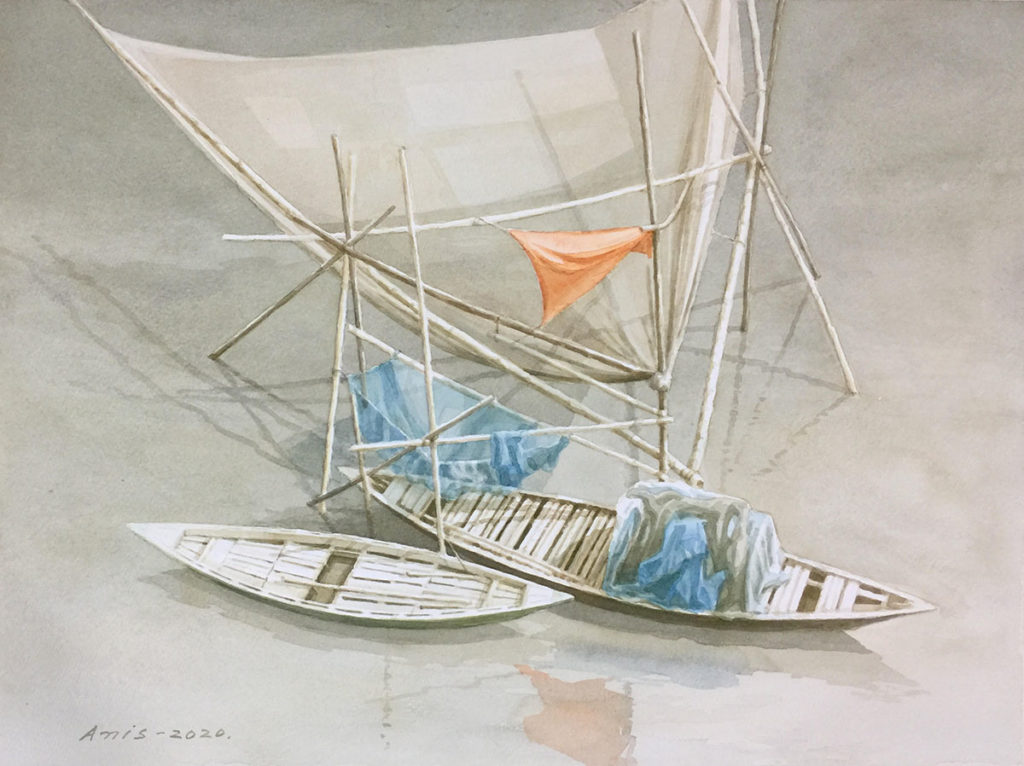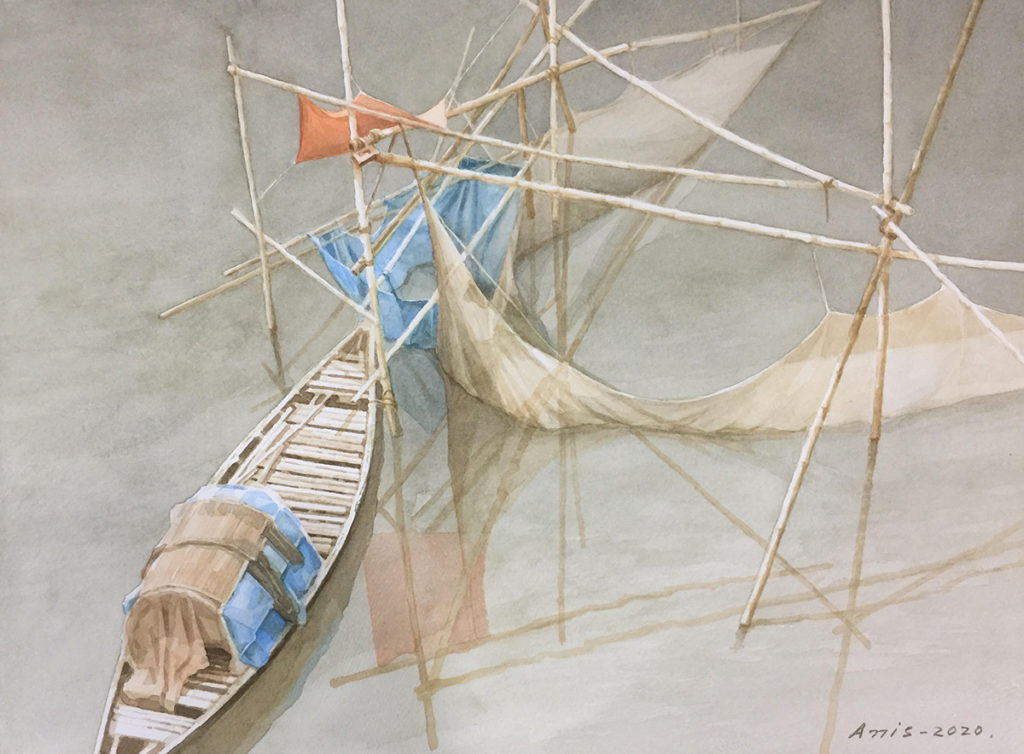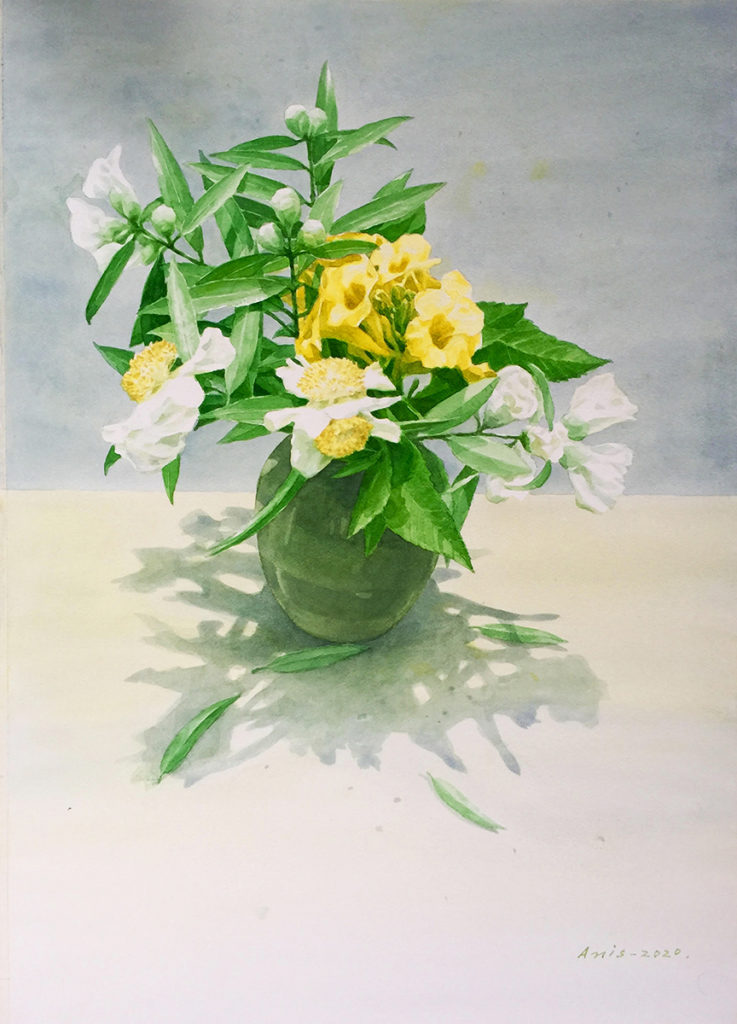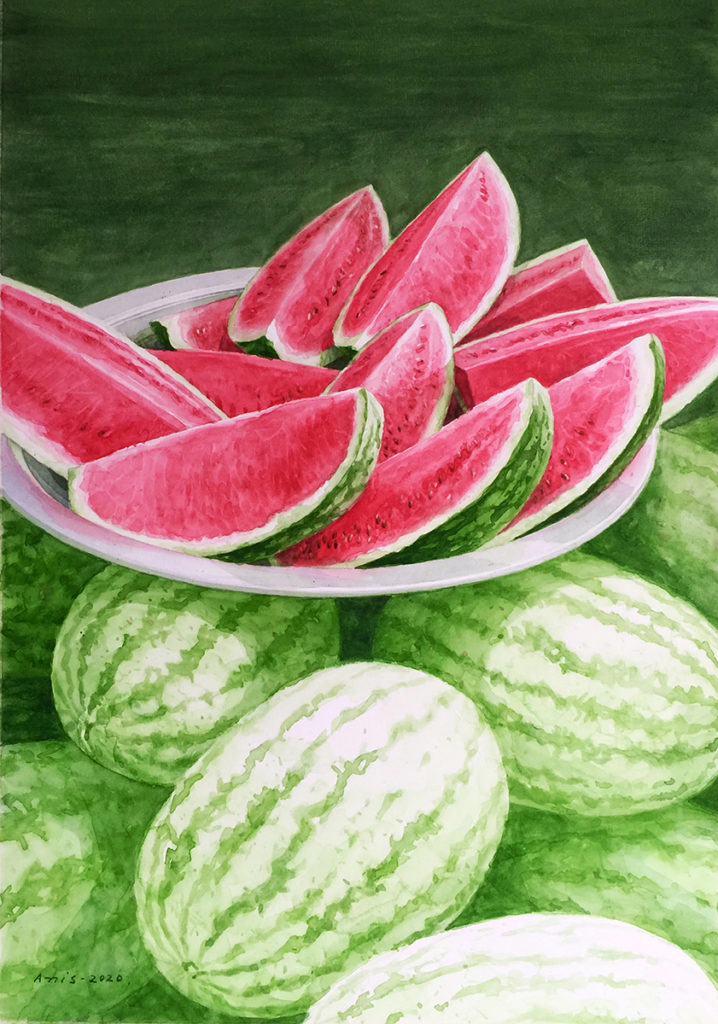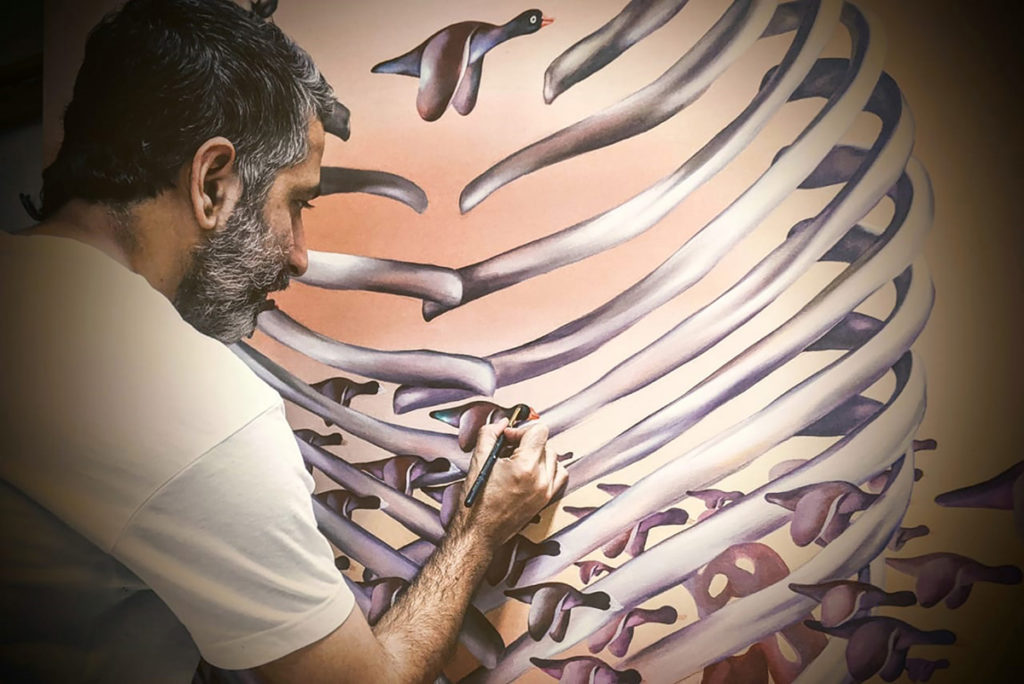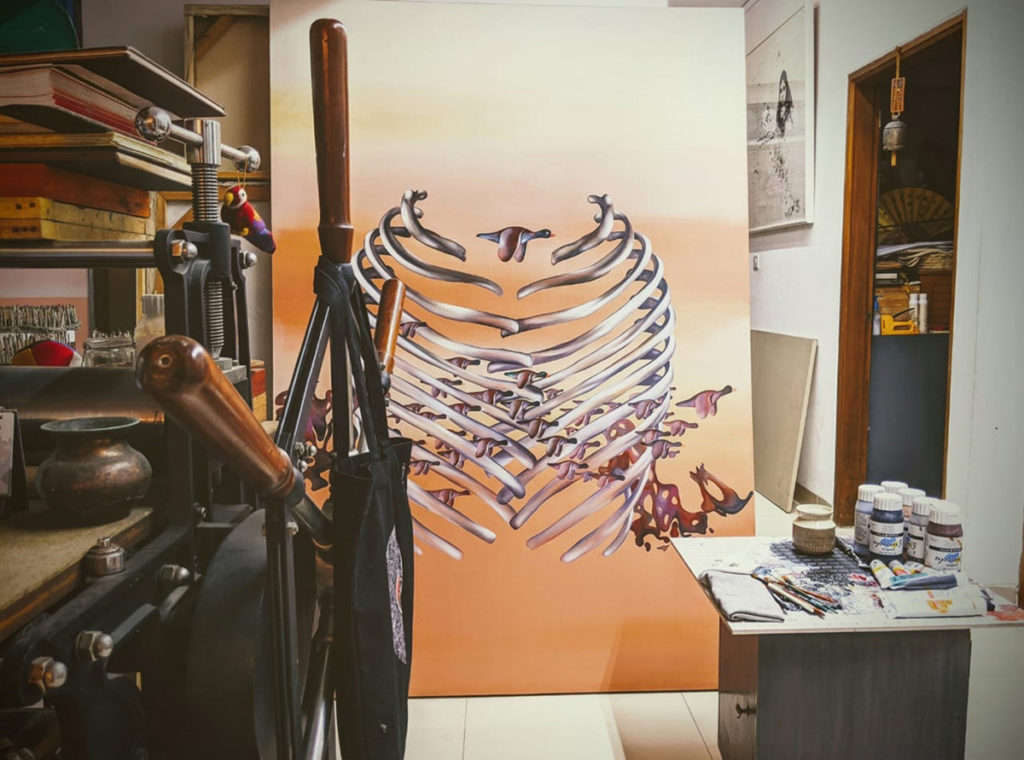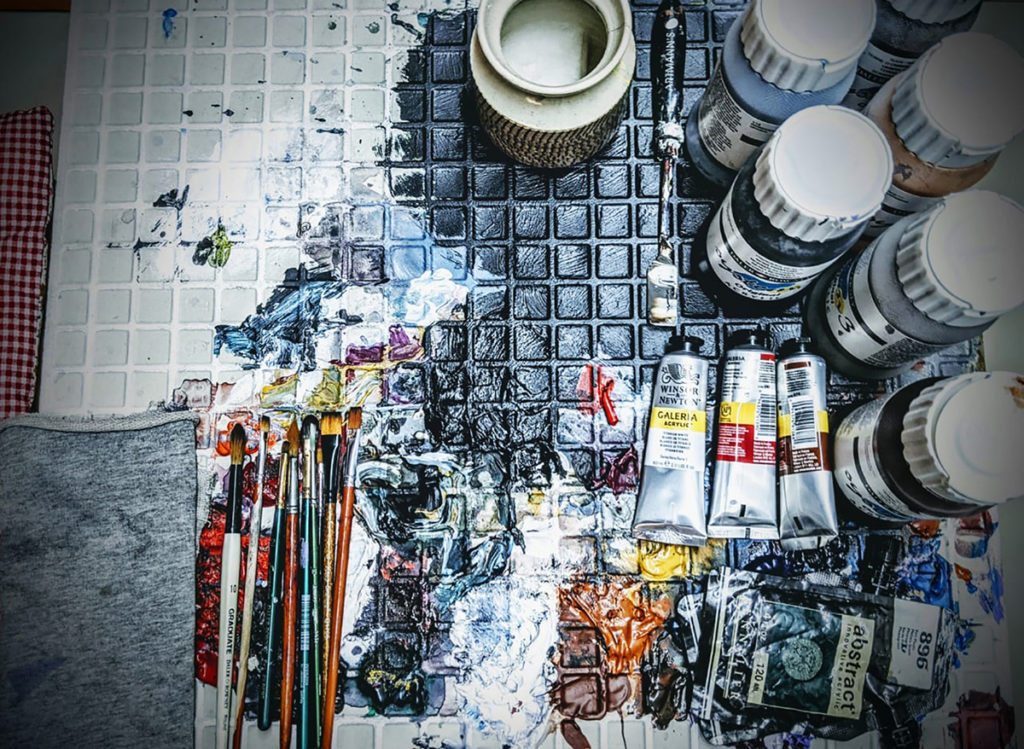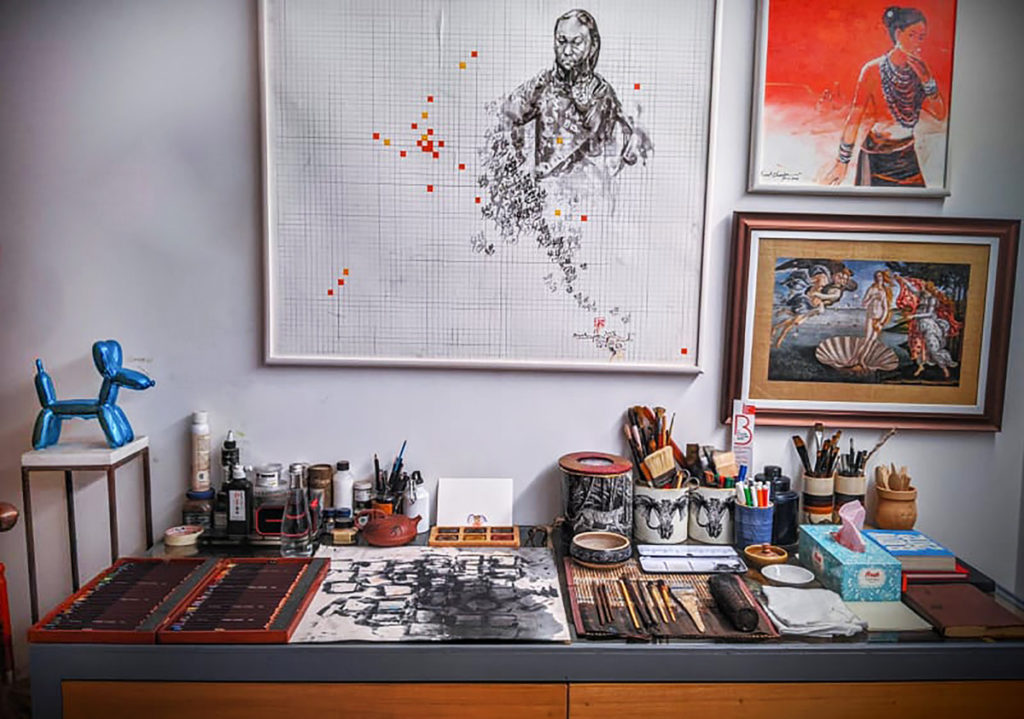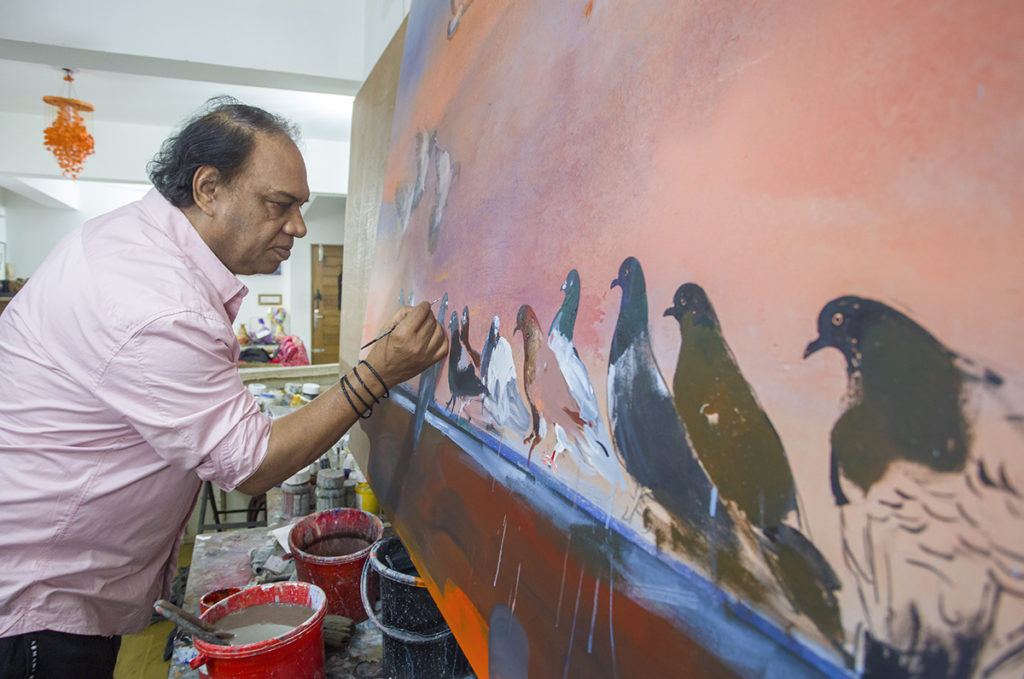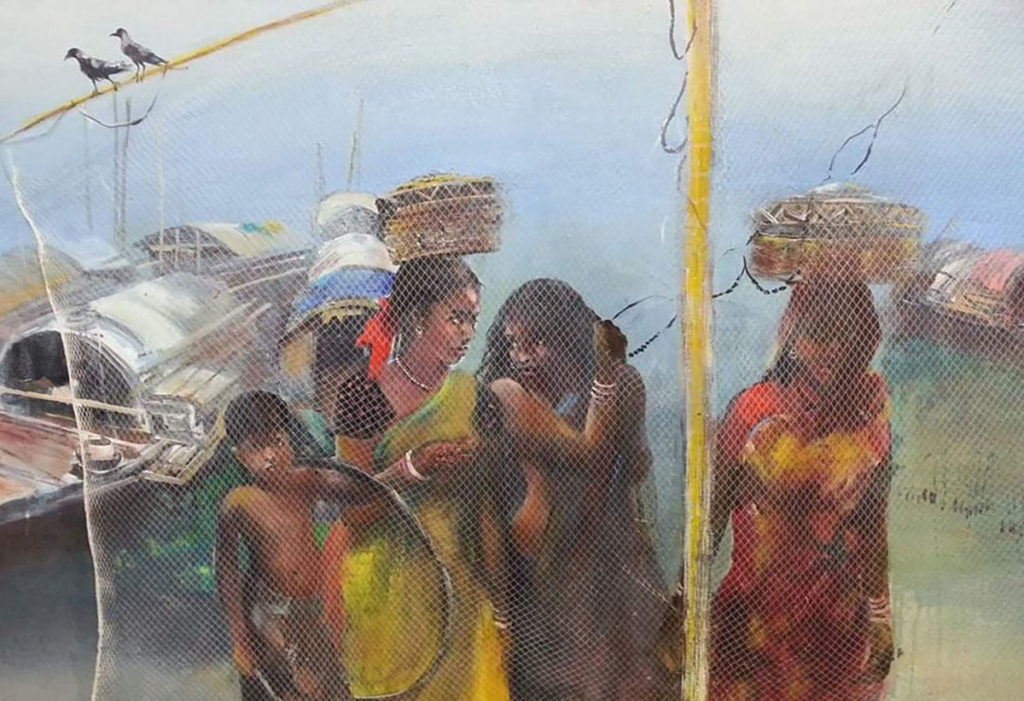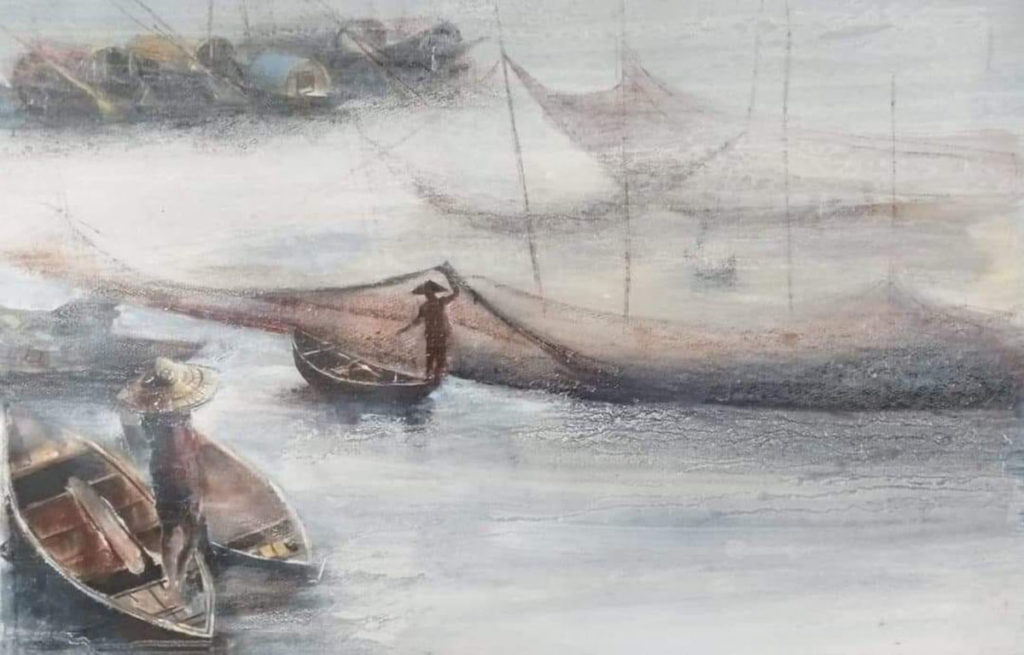Isolation Creation- How are Artists Coping with Quarantine? – Artist Column
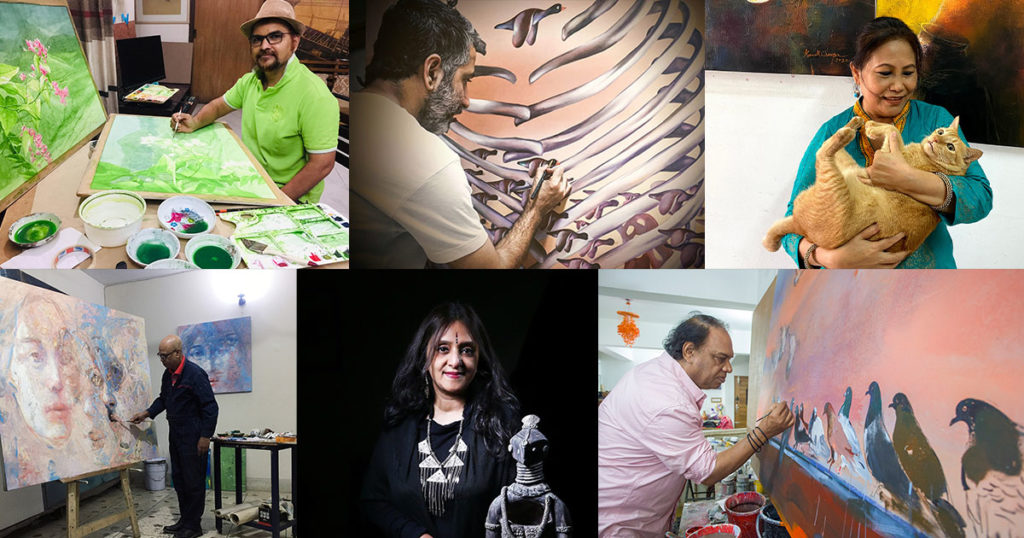
In the wake of the Covid-19 outbreak, the realm of art has witnessed sweeping changes across the world, with galleries being forced to close their doors to the visitors and most exhibitions being moved to the online platforms, as part of the new ‘online viewing’ trend. Unprecedented times like these have meant different things for artists: some are participating in online charity exhibitions; others, with the spare time in hand, have finally come around to finishing pending projects. Adapting to the new normal, the wondrous minds of the artists are finding solace in their studios. We explore the quarantined practices of 6 celebrated artists in an attempt to spread optimism for the aesthetes in this period of uncertainty and paralyzing anxiety.
Anisuzzaman Anis
Artist Anisuzzaman Anis has been sheltering at home since the lockdown, and despite the limited access to materials and space, he still feels the urge to create. As a result, he has been pouring his heart out on the art papers through seamless watercolour brush strokes. “Being able to paint in this time has really shown me how making art can be a therapeutic process on the soul. Amid the apprehension and confusion in the world right now, I do feel relief making these works and sharing them.
Right now, as never in our lifetimes, we need to remain optimistic”, Anisuzzaman exclaims. While his works in woodcut print need no introduction, his paintings in watercolour are truly captivating and comforting to the eyes. As an avid painter, he attempts to portray the diverse facets of nature, including the seasonal blooms, resting boats, serene environments, the riverine lives etc. His techniques predominantly rely on soft washes and soothing hues.
Bishwajit Goswami
In light of shifting situations, acclaimed visual artist Bishwajit Goswami is optimistic that art can serve as a glimmer of hope, across all genres. “The pandemic has disrupted the schedule we as professional artists have been working with. The news of the outbreak hit me so hard that I wasn’t able to create new art for about a month. But slowly, after some reflecting, I finally realized the process of recollecting myself. I believe art practices can be an outlet to find consolation and meaning in these times of distress”, shares Bishwajit Goswami. Rummaging through old scribbles and art project plans, he decided to create his artistic interpretation of the metaphorical folk masterpiece written by extraordinaire Lalon Fakir, “Khachar bhitor ochin pakhi kemne ashe jae”.
Symbolic of the current time in isolation, his art contemplates the soul’s nature of setting free from the encaged body. Simultaneously, Bishwajit is also planning new artworks in response to racism and injustice. On rare occasions of commuting to work, he captures photographs of the people venturing onto the streets of Dhaka during Coronavirus. Besides, his foundation ‘Brihatta’ has recently announced a three-month work grant titled ‘Brihatta Home Art Project 2020’, for virtual residency for young emerging artists who require incentive amid the unexpected global crisis.
Jamal Ahmed
While the global pandemic has forced the majority of the populace to stay indoors, artist Jamal Ahmed continues to thrive in his studio. “An artist never stops working. We have to utilize our time in isolation to bring out some positivity through art.” In most of his works, Jamal Ahmed tries to experiment with bold lines and bring out the appeal with a taste of pure realism. His works portray the exact quality and character of the subjects including the creases of drapery, the skin tone of a man or woman or the fisherman with his nets. He has achieved mastery in observing and replicating the quality of light and shade at its truest form.
His meticulous brush strokes capture the spirit, energy and beauty of landscapes and figures. As a result, his works are recognized for its enigmatic quality that works on many levels from the visual to the subconscious. The recurring themes of his paintings include nubile women in all their curvaceous beauty, gipsy women, oarsman, boatman, flood-affected people, bucolic panoramic view, riverine people, metropolis, bauls, mendicants, working-class people and even the most mundane corners of his home.
Kanak Chanpa Chakma
During quarantine, renowned artist Kanak Chanpa Chakma has carved out the time to spend time with her children and a dozen pets while at the same time work on different art series. Some of these paintings are being exhibited at online charity group art shows and virtual art camps. “For artists, it is important to adapt to this new normal and also nurture our creative souls”, she explains.
Her recent paintings titled Her Time, In Lake, Fauns, Prayer wheels etc. depict the timeless beauty of the country and its people. Following a remarkable blend of semi-realism and semi-abstraction, her artworks speak of the oft-forgotten indigenous people and their mesmerizing lifestyle. Minute details are adeptly captured in her paintings which exceptionally emphasizes on her people’s culture and lifestyle. She has worked with over 21 indigenous groups of Bangladesh and continues to do so.
Mohammad Iqbal
Artist Mohammad Iqbal has been quietly working away in his studio in Dhanmondi which is five minutes’ walk from his house. His solo exhibition titled The Holy Circle was recently hosted by Gallery Kobe Hankyu at Kobe, Japan, and his current practice is the continuation of many of those art series. Following his signature style of eight to ten layers of oil and acrylic, his paintings titled Dreaming of Safer World, Distant Skies, Unknown Faces etc are highly symbolic and philosophical in themes.
As an artist, Mohammad Iqbal seeks to portray the cruelty of anti-humanism through the eyes of helpless, tortured and conflict-stricken children. The faces of these children are universal and they unambiguously reflect happiness and sorrow, grief and pain, and uncertainty and fear. Spontaneous dots are evident in many of these paintings, denoting the imaginary icon of the non-visual agents that cause environmental contamination. His paintings always appear to be timely, as pain and sufferings remain inherent parts of living.
Sameena M Kareem
Sameena M Kareem refused to let herself helplessly sit around and has started to practice a way to hold on to her ideas till she can execute them. As a young sculptor, her work is innately entwined with the flow of life. The pieces she creates revolve around human forms, often portraying the bond between a mother and a child, as well as the infinitely graceful form of a mother figure. Her work often starts with a sketch and morphs into a fully-fledged sculpture after many more loose drawings. Even now, as she finds herself unable to work with sculpting materials, she has continued to sketch.
These sketches will be turned into sculptures in due time. To more fully capture the essence of each sketch, she has put words to them and arranged them into an accompanying poem. Sameena’s favourite motifs, mother and child, invade her thoughts in these sketches too. One of her pen sketches features a flowing mother-child duo accompanied by the moon and stars. Both the dreamlike sketch and the poem titled Haiku makes one think of a lullaby.
“Sail, baby, sail out upon that sea.
Only don’t forget to sail back again to me.”

